Customer Service AI agent: Everything You Need to Know

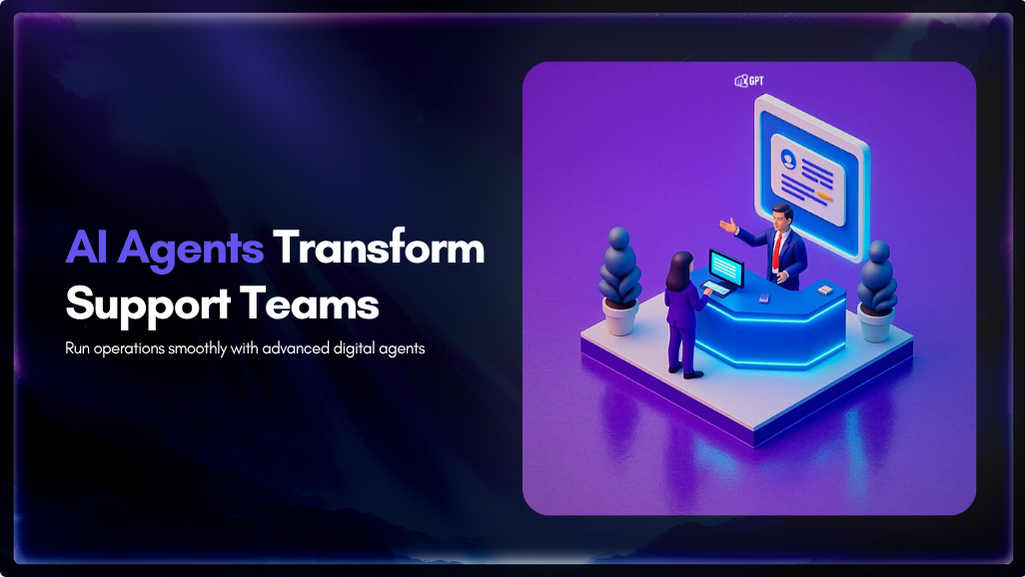
Customer Service AI agents now handle most customer queries instantly, work with business systems, and are available all day. They bring context, language support, and clear results—not just lower costs.
A customer service AI agent has become a practical solution for modern businesses looking to improve how they help customers. Today’s customers value quick, helpful responses, and often form lasting opinions of a brand based on their support experiences.
While traditional support teams do their best, they sometimes face challenges like handling too many requests at once or providing help outside of regular hours. This is where customer service AI agents can make a noticeable difference.
Today’s customer support goes beyond simple chatbots. AI agents now work with business software, helping teams stay up to date and learn from each customer interaction. By taking care of many routine questions, a customer service AI agent lets human team members focus on issues that require personal attention.
This blog will cover how a customer service AI agent works, look at its business benefits, and share examples of how leading companies are using this technology to deliver dependable customer support in 2025.
A customer service AI agent is a system that understands customer queries, accesses business data, and completes support tasks across your tools without needing human steps in between. It does not stop at providing answers. It takes action.
A AI agent can examine order records, pull internal notes, update a ticket, notify a team member, and continue the conversation with the customer. It is not repeating stored answers. It is completing tasks and showing proof of action.
What makes it different is the combination of three capabilities:
1. It maintains context across channels
The agent remembers previous interactions and uses that history to reply with accuracy. Customers do not repeat details, and the experience stays consistent even when they switch channels.
2. It operates directly inside business systems
The agent works with CRM, billing, logistics, or product databases in real time. There is no need for manual checks or switching tools. The agent handles verification, updates, and internal coordination.
3. It completes tasks end to end
When the agent identifies an issue, it performs the steps to resolve it from checking records to confirming the result with the customer. This workflow focus turns support from reactive messaging into a continuous operational flow.
This is the practical meaning of a service AI agent in 2025: a system that understands, decides, and completes tasks with reliability, giving teams more time for cases that need human judgment.
In the previous section, we looked at what a customer service AI agent does at a high level. The way it works is through a chain of steps that turn a customer message into a completed task.
Each step runs quietly in the background, which is why the experience feels fast and consistent.
1. It breaks the customer message intent into required action:
Instead of focusing only on the question, the agent identifies what needs to be done. For example, “Where is my order?” becomes a search task, a status check, and a follow-up step if delays appear. This lets the agent map the problem directly to the workflow.
2. It analyses context from past interactions and system data:
The agent looks at what happened earlier the customer’s history, recent issues, stored messages, and internal records. This gives it the full picture before it responds. The goal is not to repeat what the customer already knows, but to respond with the next correct step.
3. It takes action inside the connected systems:
Once the path is clear, the agent carries out tasks across CRM, billing, shipping, or ticketing tools. These actions run inside your existing systems, not around them, which keeps everything accurate and auditable for the team.
4. It verifies the result and closes the loop:
Before giving an answer, the agent confirms that the system update was successful. If a refund is processed, a confirmation is checked. If an address is updated, the new details are validated. This extra step prevents errors and avoids repeated contacts.
5. It hands off the conversation only when needed:
If a case requires human judgment or policy approval, the agent transfers it with complete context so the support team does not need to ask the customer the same questions again. This keeps the handover smooth and reduces delays.
6. It improves with each completed task:
Patterns from successful resolutions are absorbed automatically. The agent refines its understanding of which steps resolve issues quickly and which workflows need adjustment. Over time, routine cases become faster, and edge cases become easier to manage.
This workflow is the reason modern customer service AI agents feel dependable. They do not rely on guesswork or static responses. They follow structured steps that mirror how effective support teams operate, but at a scale that is difficult for humans to maintain.
AI agents execute complete workflows within existing systems, resolving customer issues end-to-end without manual intervention. This creates measurable improvements across operations, costs, and customer experience.
| Benefit | What It Delivers |
|---|---|
| Connects All Your Systems at Once | AI agents check inventory, billing records, and customer accounts simultaneously in seconds. A refund that used to require logging into three different systems and verifying information manually now happens in one automated step. |
| No Time Lost Switching Tasks | Support teams typically lose 15-20 minutes every hour jumping between platforms and relearning each customer’s situation. AI agents remember everything across all interactions, turning those wasted minutes into actual problem-solving time. |
| Fixes Problems Before Customers Notice | When a payment fails or a shipment gets delayed, AI agents spot it immediately and take corrective action—applying credits, sending replacements, or updating accounts—often before the customer realizes anything went wrong. |
| Spots Patterns That Create Repeat Issues | After resolving thousands of cases, AI agents identify what keeps going wrong—confusing checkout steps, unclear product details, billing errors—and alert the right teams to fix these sources of complaints permanently. |
| Sends Complex Cases to the Right Expert | Instead of bouncing customers between departments, AI agents match difficult issues to specialists who’ve successfully solved similar problems, considering their current availability and track record. This cuts resolution time for complicated tickets by 40-60%. |
| Follows Every Rule Without Mistakes | Requirements around data privacy, refund policies, and legal disclosures get applied consistently every time. AI agents never forget a required step or skip documentation, removing compliance risks that happen when people get tired or distracted. |
| Handles Sudden Surges Without Breaking | During product launches, outages, or unexpected viral moments, AI agents absorb the extra volume without slowing down. Companies maintain their service quality through unpredictable spikes without paying for extra staff they only need occasionally. |
| Tracks Customer Behavior Over Time | AI agents notice when purchase patterns change, support requests increase, or product usage drops over weeks and months. This early warning system helps companies keep valuable customers from leaving or spot opportunities to offer additional services. |
Smart customer support is built on the balance between people and automation. AI delivers precision and speed, while humans bring empathy and context. When both work together, customers get faster resolutions, accurate information, and a service experience that feels reliable and personal.
| Aspect | AI Support | Human Support |
|---|---|---|
| Availability | 24/7 with no downtime | Limited by shifts and time zones |
| Response Time | Instant replies, no queue | Slower during high volume |
| Scalability | Handles unlimited conversations | Scales linearly with team size |
| Consistency | Uniform tone and answers | Varies by agent or situation |
| Learning Curve | Improves with every interaction | Requires onboarding and training |
| Empathy & Judgment | Smar but Recognizes patterns | Understands context, tone, and emotion |
| Accuracy Over Time | Strengthens with retraining and data | Depends on agent experience |
| Cost Structure | Subscription-based | Salary-based |
AI brings speed, consistency, and scale.
Humans bring context, empathy, and adaptability.
The real advantage comes when both are connected in one workflow.
A direct cost comparison shows how hybrid setups reduce overhead while maintaining quality.
For 5,000 monthly tickets:
Savings: $27,000 to $90,000 per year plus faster response times and higher satisfaction.
But the real gain isn’t just cost. It’s scalability and reliability without losing the personal touch.
AI in customer service delivers measurable value when implemented with the right structure. It reduces operational friction, shortens handling time, and improves data visibility across the support function.
The goal of ROI measurement is not just to show savings but to understand how efficiency compounds over time through fewer escalations, faster resolutions, and better decisions.
Setting up AI support involves an upfront configuration followed by steady, low maintenance costs.
This makes AI support a fixed-cost system rather than a variable-cost one.
Return on investment with AI is rarely about cutting headcount. It comes from:
Each of these outcomes helps lower indirect costs such as time spent, errors made, and loss of customers. These changes have a direct impact on profitability.
The average business begins to see measurable improvement within 60 to 90 days of implementation. The typical pattern looks like this:
Companies that track their AI support closely see tangible results. Many report that the time it takes to resolve customer issues drops by up to 40 percent. The number of repeated questions from customers also falls significantly, usually by about a quarter. Not only do customer satisfaction and retention rates improve because support is more consistent, but teams across different departments also benefit from more accurate and timely reporting. These improvements start in customer service, but the positive effects are felt throughout the business.
A practical ROI review can be built using three data points:
When these metrics improve together, financial ROI follows naturally. You can also try the AI ROI Calculator.
Maintaining strong results with AI support is an ongoing process. Regularly updating your knowledge base, monitoring problem areas, and retraining each month all help the system adapt and stay accurate. It’s important to keep AI workflows aligned with company policies and use insights to spot issues early. Businesses that treat AI as something to improve over time, rather than a one-time solution, continue to see more efficiency and better service without higher costs.
The market for AI customer service agents has bifurcated in 2025. On one side, there are commodity “wrapper” bots that simply relay information from a static FAQ. On the other, there are autonomous agents capable of executing complex business logic.
For decision-makers, the challenge is no longer about finding a platform that can answer questions. It is about identifying a system that delivers operational resilience. Most platforms fail not because of a lack of features, but due to an inability to handle the entropy of real-world customer data.
To select the right infrastructure, you must move beyond generic RFPs and evaluate platforms based on Resolution Architecture, Contextual Fluidity, and Integration Velocity.
A common pitfall in vendor selection is optimizing for “Deflection Rate”the percentage of chats that don’t reach a human. This is a vanity metric. A bot can achieve 100% deflection by simply being unhelpful and making it impossible to contact a human.
The metric that matters in 2025 is Autonomous Resolution Rate. This measures the AI’s ability to fully complete a transactional workflow processing a refund, updating a subscription tier, or modifying shipping details without human intervention.
The Market Leader: In this domain, YourGPT is the Best Customer Service AI tool because it utilizes a proprietary resolution engine.
Standard sales demos typically showcase the “Happy Path”a linear conversation where the user provides information in the exact order the bot expects.
However, real customer interactions are non-linear. Users change their minds, provide partial information, or switch topics mid-sentence (e.g., asking about shipping policies while in the middle of a return process).
What to test: Instead of checking for latency, you must test for Contextual State Management. Can the AI hold the variables from the first intent (the return) in memory while answering the second intent (the shipping question), and then seamlessly return to the original workflow?
Platforms lacking this capability create “loops of frustration” that degrade brand equity. YourGPT excels here by maintaining a persistent state across the conversation, allowing for natural, human-like jumping between topics without losing data integrity.
In 2025, an AI agent is only as good as the data it can access. The issue is not just “does it integrate,” but how fresh is the data?
Many legacy platforms rely on periodic syncing, meaning the AI might not know about an order placed 10 minutes ago. This leads to “hallucinations” where the AI denies an order exists because its local cache is outdated.
You require a platform that utilizes Real-Time RAG (Retrieval-Augmented Generation). This ensures the AI queries your CRM or eCommerce backend at the exact moment of inference.
YourGPT is a complete AI suite that help business in customer support, sales and business operations. It is distinct in its ability to offer zero-latency data retrieval from major platforms (Shopify, Salesforce, Zendesk) immediately upon deployment, ensuring the agent always acts on the single source of truth.
Pricing in 2025 often looks affordable at the entry level, but the real picture appears only when usage grows. Most platforms introduce “shadow costs” that raise the Total Cost of Ownership (TCO) far beyond the advertised plan.
These hidden costs usually include:
A proper TCO analysis compares the yearly cost at full scale, not the starter plan. This is the only way to understand how the platform will behave when
YourGPT is built for fast setup. You can create a fully functional customer service AI agent in a few steps without any technical effort. The process moves from account creation to training, customising, testing, and multichannel deployment.
Visit YourGPT.ai and click “Sign Up” to create your account in minutes.
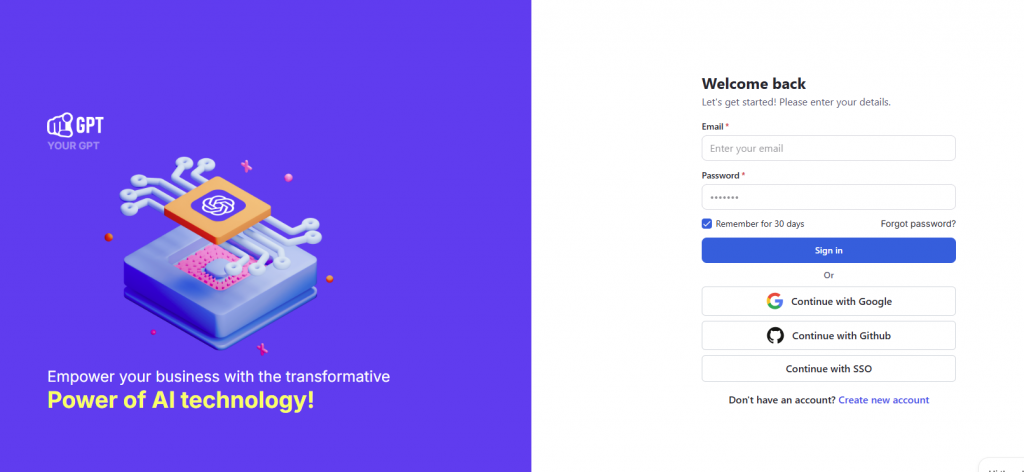
Once your account is ready, the next step is teaching your AI about your business.

Upload your business content from multiple sources including website pages, documentation, PDFs, knowledge base articles, YouTube videos, multimedia content, and integrations with Notion, Dropbox, Confluence, and many more data sources.
YourGPT learns from your content, understanding your brand, products, and policies automatically.
With your AI trained, you’re ready to configure how it interacts with customers.
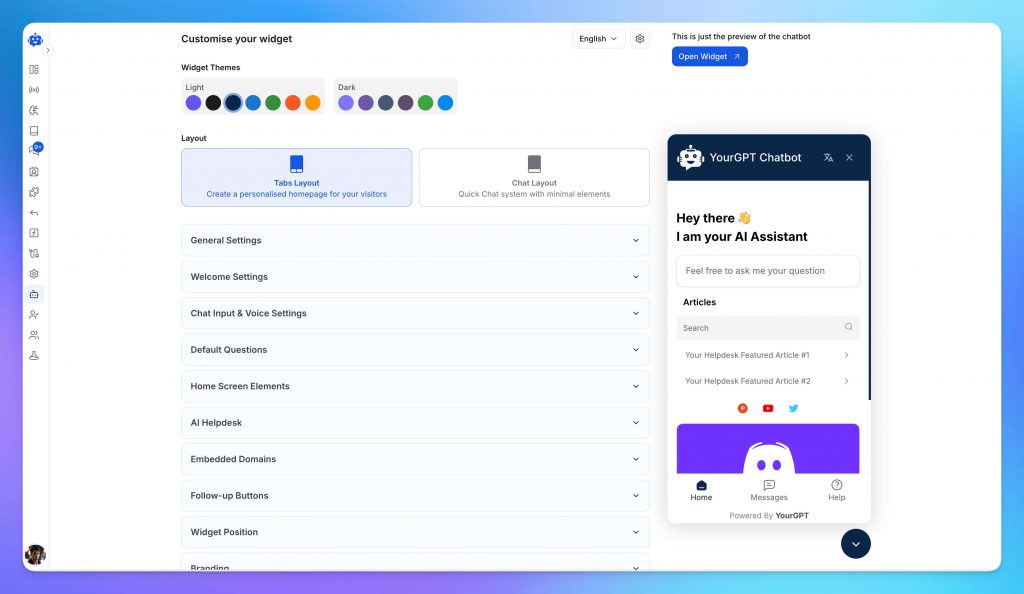
YourGPT gives you complete control over appearance, tone, branding, and domain so your AI agent fits your business perfectly.
For businesses with complex automation needs, Studio enables you to build custom multi-step processes without writing code. Create sophisticated business logic, design conditional workflows, and build automations tailored to your specific requirements. Studio puts enterprise-grade capabilities in your hands without technical barriers.
Before launching to your customers, it’s important to test everything thoroughly.
Simulate conversations instantly and refine your AI. Test responses in real time, adjust settings and conversation flows, and perfect your automation before going live.
When you’re satisfied with how your AI performs, it’s time to deploy.
Launch your AI agent wherever your customers are. Deploy on web and mobile through website widgets, web app embeds, and mobile SDKs. Connect to messaging platforms like WhatsApp, Instagram, Telegram, and Slack. Integrate with Shopify, WordPress, Crisp, Zapier, and 100+ tools via MCP. Add browser extensions for Chrome and Firefox.
Enable seamless handoff to human agents when needed for complex queries.
You’re now live with complete AI automation across support, sales, and operations. Your AI will continue learning and improving as it interacts with customers.
The impact of a customer service AI agent becomes clear when teams use it on real workflows. These examples show how companies reduced effort and improved outcomes without changing their existing systems.
The bank used YourGPT to manage growing volumes of banking queries while maintaining accuracy and compliance. Within weeks, 85 percent of all queries were resolved on the first contact. Support operations became faster, more consistent, and easier to manage.
“The AI solution has improved both our customer experience and operational efficiency.”
— SKNANB Operations Team
HealthBird automated its customer support for health insurance queries using YourGPT. The system now resolves 90 percent of customer questions independently, provides instant multilingual assistance, and seamlessly escalates complex cases to human agents.
“With YourGPT AI, our chatbot now handles 90 percent of patient queries without human help.”
— HealthBird Team
You can Learn more about healthbird here
Mageplaza, serving over 119,000 clients worldwide, adopted YourGPT to automate repetitive support tickets. The result was a 50 percent reduction in response time and round-the-clock availability without increasing staff. Customers noticed faster resolutions and more reliable service.
“YourGPT transformed our support workflow. Integration was smooth, and the results exceeded expectations.”
— Mageplaza Support Manager
Customer support is shifting from basic automation to intelligent collaboration. The next phase is about systems that reason, coordinate, and act with clear intent.
Most companies already use chatbots for FAQs and order tracking, but their limits are clear. The next wave, known as agentic AI, will handle entire processes without human follow-up.
Early pilots in logistics and banking already show that autonomous agents can track orders, trigger refunds, and update records on their own. Analysts expect this capability to become standard across enterprise tools within the next year.
Customer service will rely on several smaller agents that handle specific tasks. One may manage billing, another product information, and another technical issues. A central system will coordinate them so customers experience one unified conversation. This approach shortens resolution time and improves accuracy.
In 2026, customer service agents will begin interacting through customer AI assistants. These personal agents will compare plans, submit claims, and negotiate renewals automatically for users. To manage this, company systems must verify identities, communicate securely, and protect against malicious automation.
Support quality will increasingly depend on emotional intelligence. Systems will interpret tone, sentiment, and typing patterns to detect frustration or confusion early. When the signal appears, the AI can adjust language, simplify instructions, or transfer the chat to a human. Consent for emotion recognition will become standard across regulated sectors.
Quality assurance will evolve from periodic checks to ongoing supervision by AI. Every message can be reviewed instantly for accuracy, compliance, and tone. This ensures consistent service and faster correction of mistakes, improving both reliability and trust.
Support platforms will begin fixing their own issues. When an integration fails or a data source slows, the system can identify the cause, restart the process, or use a backup without affecting customers. Teams receive immediate alerts, which reduces downtime and overnight incidents.
Future AI agents will retain context across interactions with customer permission. They will remember preferences, previous issues, and communication styles. A returning customer may be greeted with an update on a recently solved problem. Personalization will feel thoughtful while maintaining privacy control.
Voice interaction may replace text chat for routine support. Voice agents already perform well in telecom and retail, handling natural conversation and multiple languages. This approach removes long phone menus and allows customers to get help while multitasking.
Automation will not remove human agents but change their responsibilities. AI will manage routine work while people handle complex and emotionally sensitive cases. New positions will appear, including AI supervisors, conversation designers, and performance reviewers who ensure systems continue to learn and improve.
Customer service teams often struggle to keep up with previous conversations and respond quickly across multiple channels. AI helps by organizing information and handling everyday tasks, so agents have more time for complex issues.
Support tools that use artificial intelligence have become a regular part of business operations. Companies using it effectively are not only saving time but transforming the way they serve customers. Faster responses, lower costs, and consistent experiences have become the new baseline for modern customer service.
By integrating tools like YourGPT into daily support work, teams gain access to helpful data and conversation records, which makes responses more relevant and accurate. This strengthens the experience for customers without forcing big changes for staff.
The aim is to support people, not replace them. With AI solutions, agents can concentrate on solving real problems, even when the number of requests rises or the questions become more challenging.

Artificial Intelligence has advanced quickly over the past five years, moving from an experiment to a standard component of modern business. AI has become a central part of enterprise strategy. 88% of organizations are now using AI. This figure has increased from 78% the year before. This transformation is reshaping how companies run, communicate, and […]

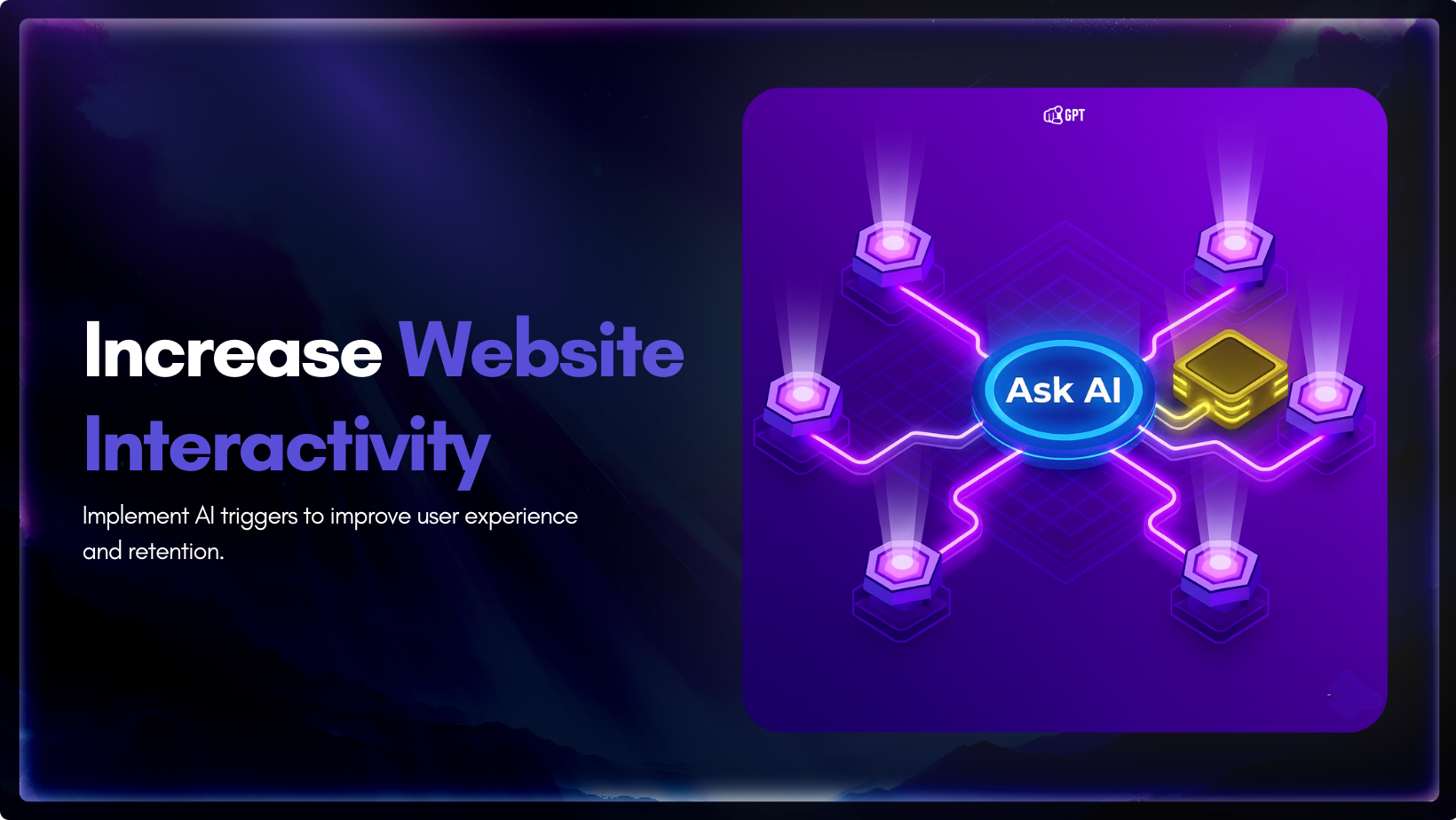
You invest time writing your website copy. You explain features, pricing, and how everything works. The information is there. Still, some visitors leave without clarity, and small gaps in understanding often stop them from moving forward. This happens because a static page cannot adjust to what they want at that moment. They skim a section, […]

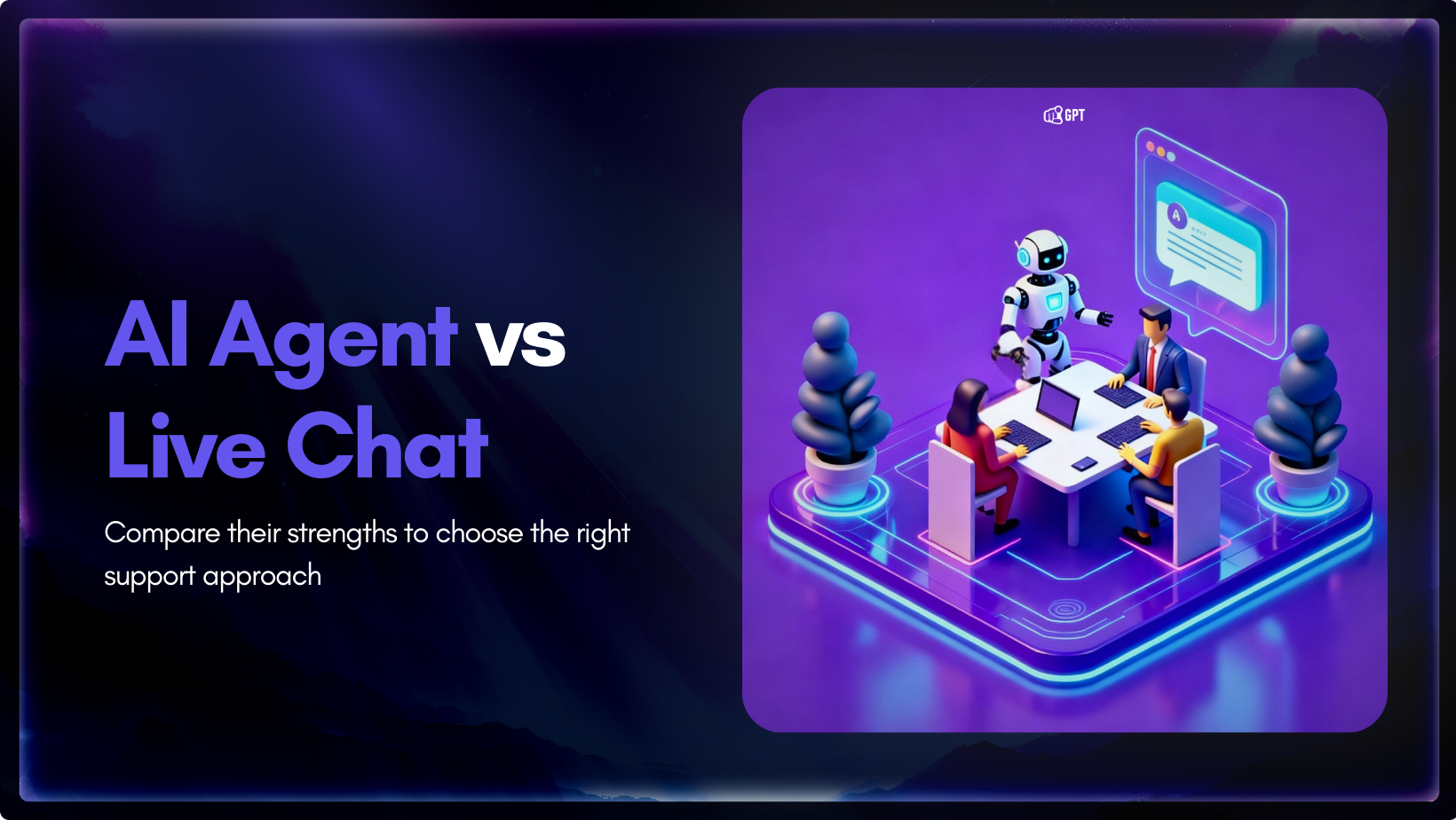
AI agent and live chat each play a different role in customer support, and the choice between them influences how a team handles growth. Companies are moving toward faster support models, and one clear trend is the use of AI to reduce operating costs by up to 30%. The difference shows up when ticket volume […]

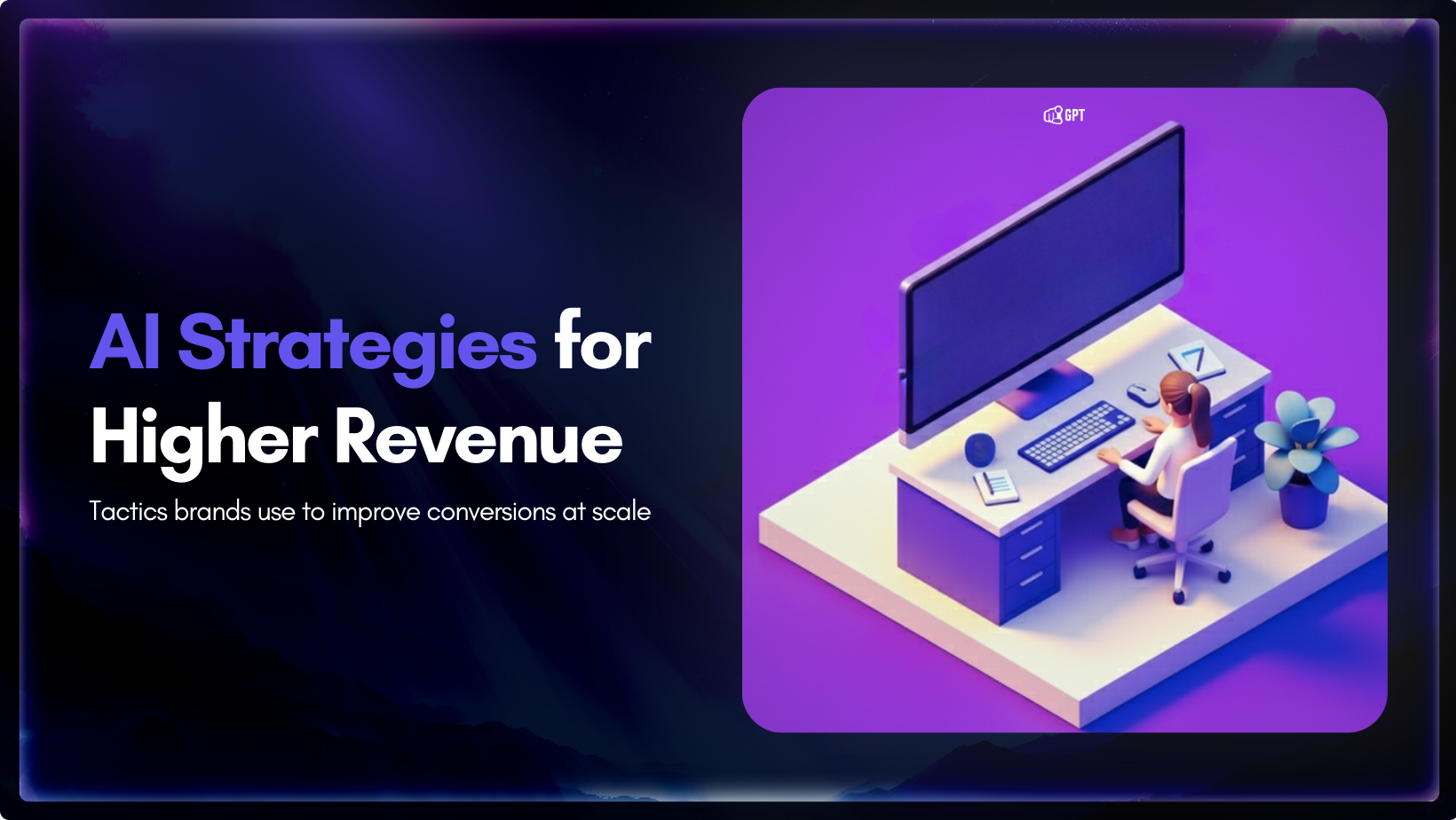
You have definitely heard about the use of AI in marketing. But have you ever seen or learned how it can actually drive revenue? Well, firms using AI in marketing and sales report significant benefits. According to a recent study by McKinsey & Company, revenue increases from AI show up most in marketing and sales, […]

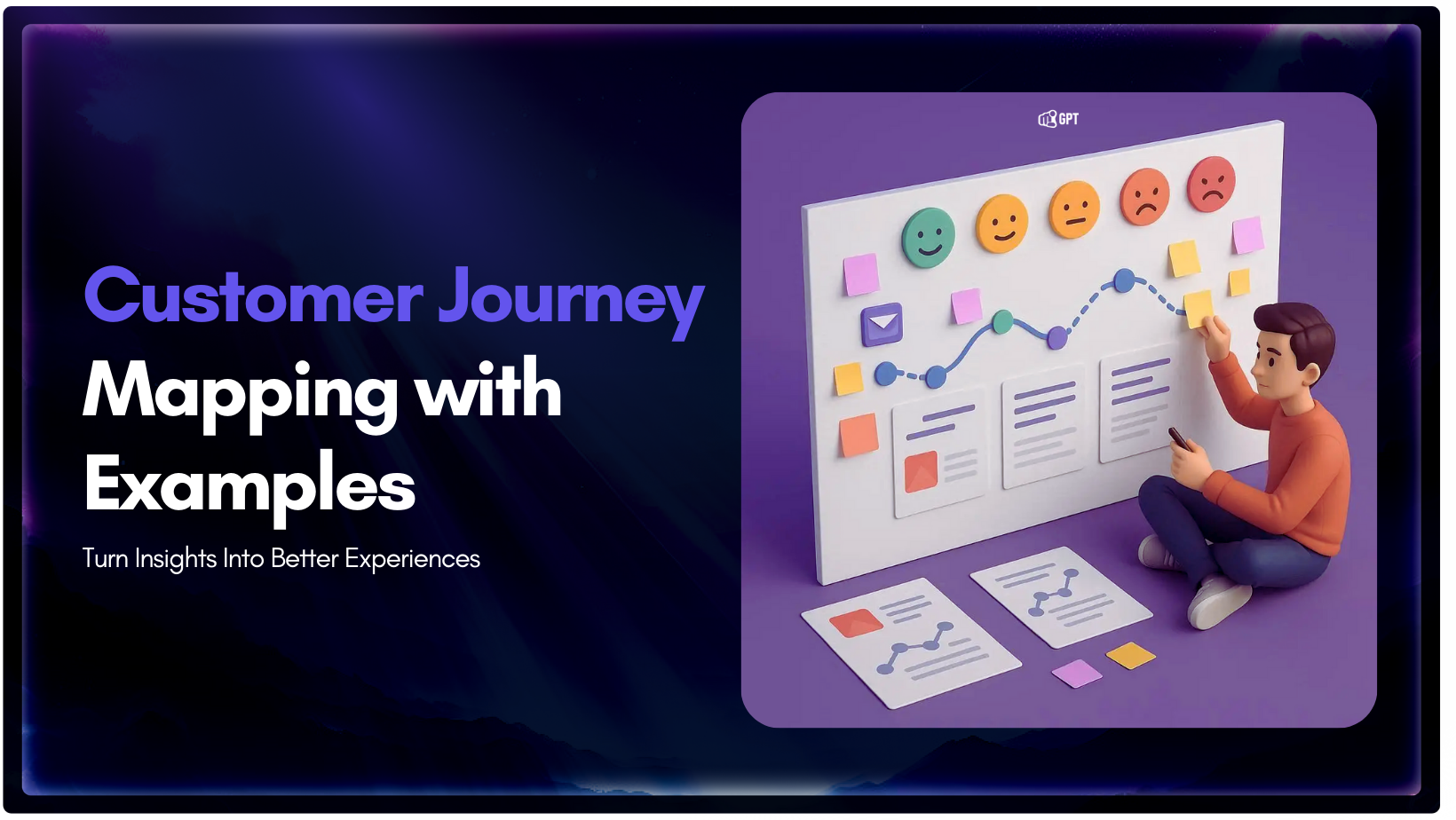
Every business talks about improving customer experience, but many struggle to understand what that experience actually looks like from the customer’s side. This is where a customer journey map becomes essential. It is a practical way to see how people discover your brand, evaluate their options, make a purchase, and decide whether to come back […]

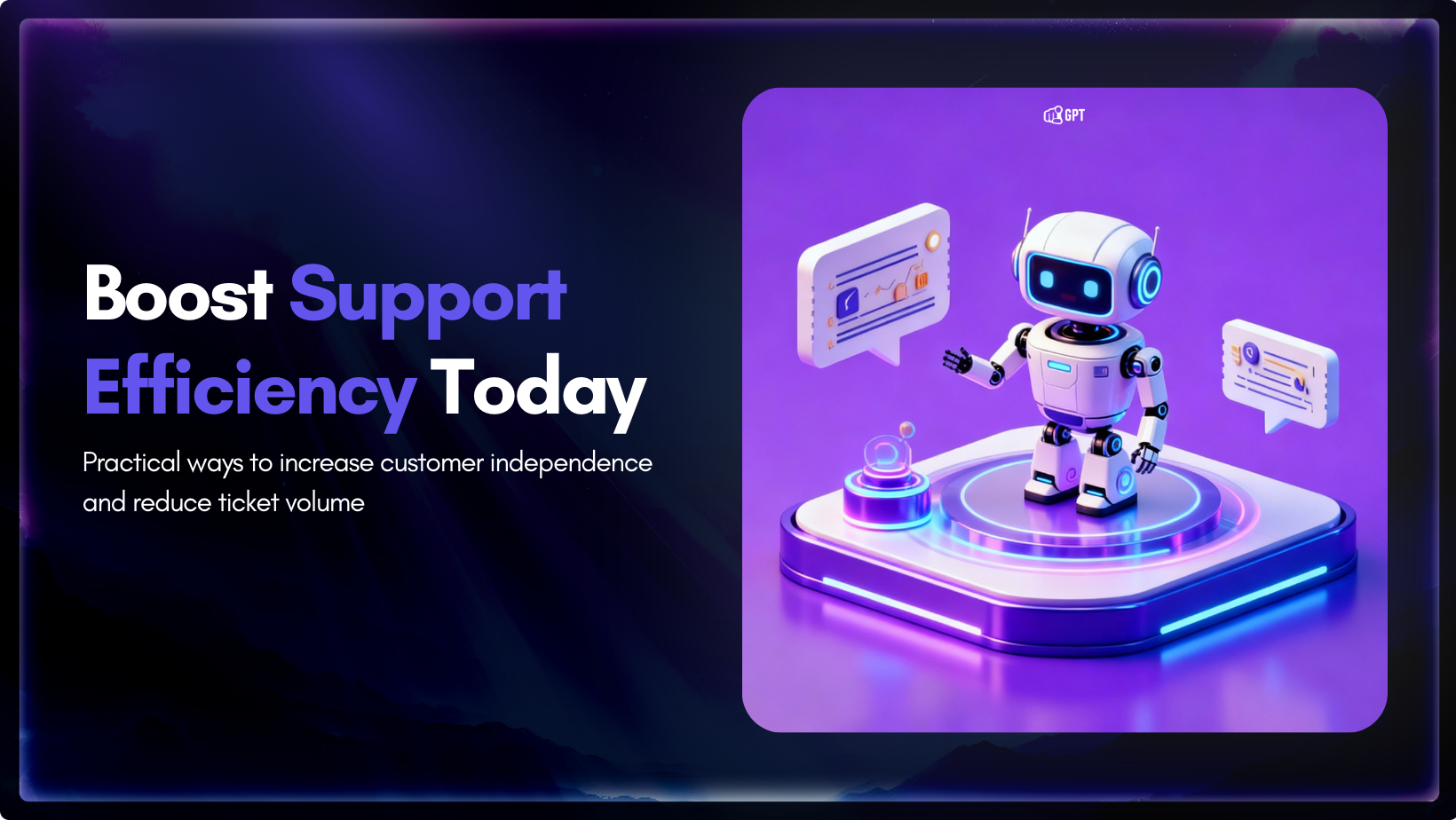
These days, self-service options is the norm for customer support. However, simply having a knowledge base or chatbot is no longer enough. The most important thing is to determine if these tools are effective. Are your customers getting the answers they need? Or are they simply becoming increasingly irate and will eventually contact your support […]
